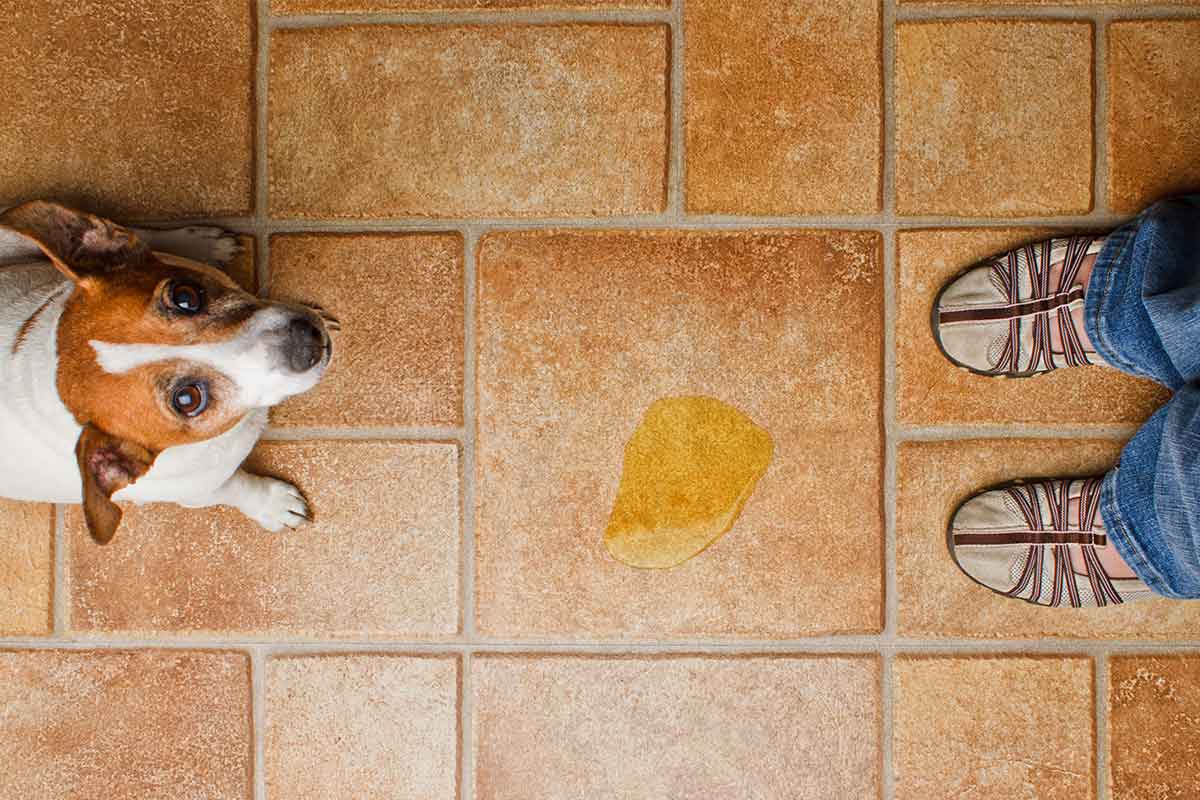The most asked question when it comes to bringing home a new puppy or dog is how to housetrain. In all honesty, most housetraining accidents are more human error than dog error. Someone wasn’t watching the dog. Someone didn’t take the dog out after she woke up from a nap. Someone didn’t take the dog out after he ate. You get the picture.
Housetraining is really about schedules and supervision. Your dog is just like a baby. She will do best when she eats, plays, rests, and goes to the bathroom at the same time every day. As a rule, puppies can hold their bladder for one hour for every month of age. If your puppy is three months old, he can hold his bladder for about three hours.
Housetraining Tips For Success
- Take your dog to the same place outside. Guide her to the spot on a leash, even if it’s in your backyard (at least in the beginning).
- Teach your dog to go on command. (Very handy when it’s raining or if you’re in a hurry.) Pick a word or phrase and say it every time your dog starts to “go.” Then gradually begin to say the word before your dog starts to “go.” Just remember, don’t say the word in your house! Remember to give treats and a lot of verbal praise every time the dog “goes.”
- Reward your dog with a treat and lots of praise every time he goes to the bathroom outside.
- Feed your dog at the same time every day and don’t leave food out 24/7.
- Pick up your dog’s water about 2 hours before bedtime to minimize accidents in the middle of the night (especially for puppies).
- Take puppies to the bathroom every two hours, immediately after eating and drinking, after play time, and after they wake up.
- Don’t yell at your dog or punish her if she has an accident in your house. Reflect on who was supposed to be watching the dog and what signs you might have missed that led to the accident.
- Clean up any accidents with an enzyme-based pet stain remover.
- Hang a bell on or near the door that you use to take your dog to the bathroom. Start by ringing the bell when you go outside. Then help your dog ring the bell. Your dog will associate the ringing bell with going to the bathroom and will gradually learn to ring the bell when they have to go out. Remember to give treats and a lot of verbal praise when the dog rings the bell.
- When you can’t supervise your puppy or new dog, put him in a dog crate.
The idea is to have your dog outside or heading outside at just about the time that she has to “go.” Don’t rely on your dog to tell you when, in the beginning. Ideally, you want to be near the potty area when the dog’s bowel and bladder are full. The most likely times are when they wake up from a nap, after playing or exercising, and after eating. Eating stimulates the digestive tract, so you know that your puppy will need to go to the bathroom after eating.
You want to make it more rewarding for your dog to go to the bathroom outside than inside. Have special treats on you, so you can reward your dog generously when he potties outside. Don’t reward him when you get inside. You always want the reward to immediately follow the success outside.
Help your dog be successful by following these rules for housetraining success. In our next “Welcome Home” blog installment, we’ll talk about the importance of dog-proofing your home and how to make it a fun game your kids can play.
What housetraining tips have you tried that have worked? Share your experiences with us.
This article was reviewed/edited by board-certified veterinary behaviorist Dr. Kenneth Martin and/or veterinary technician specialist in behavior Debbie Martin, LVT








